Behnam House in Tabriz: A Qajar Era Mansion
The Behnam House was originally constructed during the decline of the Zand dynasty but reached its zenith under the Qajar dynasty.
Renovated extensively during the reign of Nasereddin Shah Qajar, the house was adorned with intricate ornamental paintings. The property features two distinct sections: the Winter Building, a two-storey structure with a basement, and the Summer Building.
Noteworthy for its traditional layout, the Behnam House includes both an inner and outer courtyard, with the inner courtyard being more expansive. A recent renovation project in 2009 uncovered and restored hidden miniature frescoes, revealing the house’s artistic heritage.
Today, the Behnam House is part of the School of Architecture at Tabriz Art University, preserving its historical and architectural legacy. Stay with us to explore the enchanting details of this historic gem.
Why Visit Behnam House in Tabriz?
- Behnam House showcases stunning and historically significant architecture, reflecting traditional design styles of the past.
- The house features exquisite decorative elements that enhance its artistic and historical value, providing a rich visual experience.
- Visitors can gain insight into the lifestyles of prominent families from the Qajar era through the home's architecture and design.
- It is located near Sadighian House, Ghadaki House, and Ganjeyi Zadeh House offering you a chance to explore multiple historical residences in one visit.
- The house is equipped with distinct areas designed for both summer and winter living, reflecting the traditional approach to seasonal accommodation.
- It boasts newly uncovered ancient wall paintings, adding to its historical allure and visual appeal.
About Behnam House in Tabriz
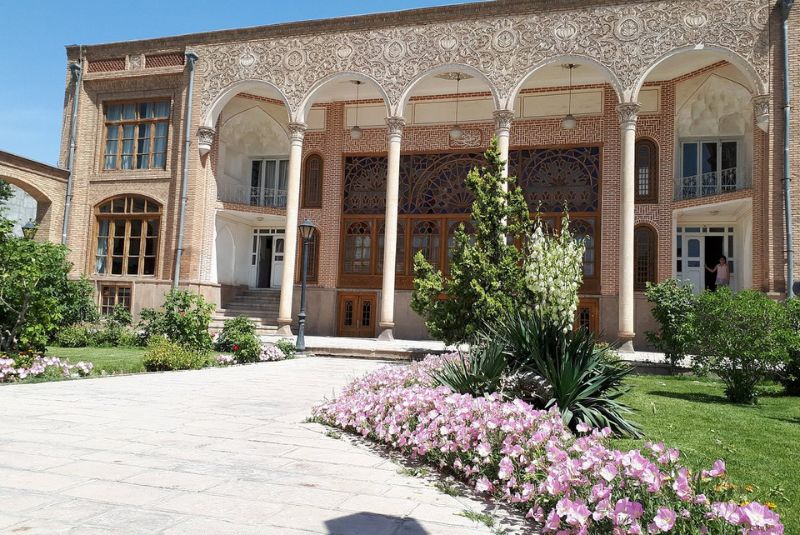
Behnam House in Tabriz is situated in the Maqsoudiyeh neighborhood. It is a significant historical structure from the late Zandieh and early Qajar periods that belongs to Behnam Ganje’i.
Registered as a national heritage site on April 12, 1997, it reflects the architectural styles of its time. Originally constructed as a residential home, it was renovated during the reign of Naser al-Din Shah Qajar, featuring beautiful frescoes.
The house comprises a main building for winter and a smaller one for summer. It includes inner and outer courtyards, with distinct architectural elements such as a columned veranda and intricate plasterwork.
Recent restorations have uncovered and are preserving several ancient Persian frescoes. Currently, Behnam House serves as part of the Islamic Art University of Tabriz's architecture department.
Who was Behnam Ganjeh’i?
Behnam Ganjeh’i was a member of the influential Ganjeh’i family, which was connected to the Qajar dynasty. The Ganjeh’i family originally ruled over Ganja in Azerbaijan. However, after Russian dominance in the region, the Ganjeh’i family relocated to Tabriz, where they became involved in politics and trade. Behnam House served as the residence for one of the members of this prominent family.
Architecture of Behnam House in Tabriz

Behnam House in Tabriz is a splendid example of traditional Iranian residential architecture, featuring a layout that includes both an inner and outer courtyard. The house is divided into two main sections: the primary building, serving as a winter residence, and a smaller structure designated for summer use.
The house is accessed via a narrow alley from Koocheh-e Moshir-e Daftar, leading through a passageway to the entrance. The main entrance opens into a vestibule, which then connects to the inner garden courtyard.
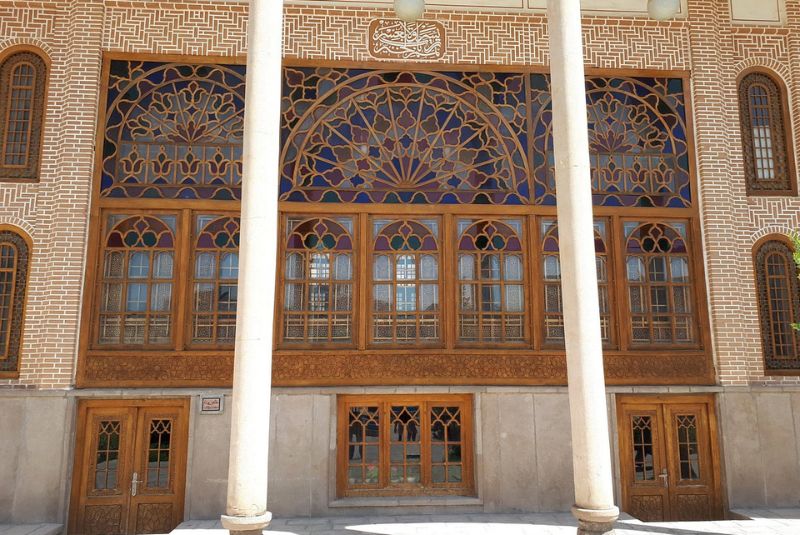
The central hall, or Tambi, is spacious and oriented east-west, with intricate stained glass windows on the north and south sides. A notable feature is the grand colonnaded veranda on the southern side, while the northern veranda's columns match the height of the Tambi.
The northern section of the house, known as the Beyroo (outer part), includes the Tambi with its seven windows, a large hall, and several rooms situated on the northern side of the courtyard.
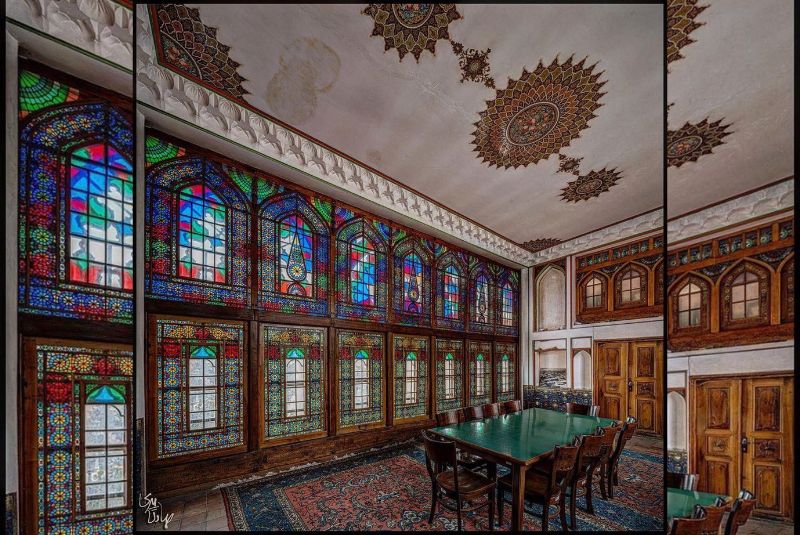
The Tambi is adorned with exquisite frescoes on its walls and ceilings, showcasing vibrant colors and detailed craftsmanship. The southern side of the outer area features a summer terrace with decorative plasterwork and several other rooms.
Beneath the Tambi lies a Hozkhaneh (pond house), notable for its domed ceiling with brick framing and a stone pond, adding a unique visual appeal. The architectural balance, spaciousness, and diverse vaults and domes are remarkable, while the brickwork patterns and the elegant stucco and mirror work add to the building's charm.
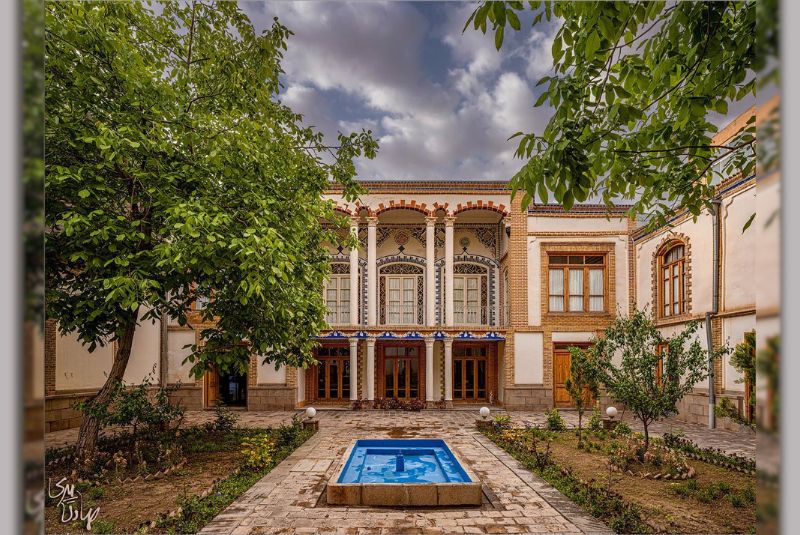
The house's design also includes various functional areas like storerooms and a kitchen in the basement, emphasizing its versatility and the intricate detail of its traditional architecture.
Different Sections of Behnam House in Tabriz
Behnam House in Tabriz features distinct areas and structures, each with its unique characteristics and uses. The house consists of two main courtyards—outer and inner—and two primary buildings: the main structure and a smaller summer residence.
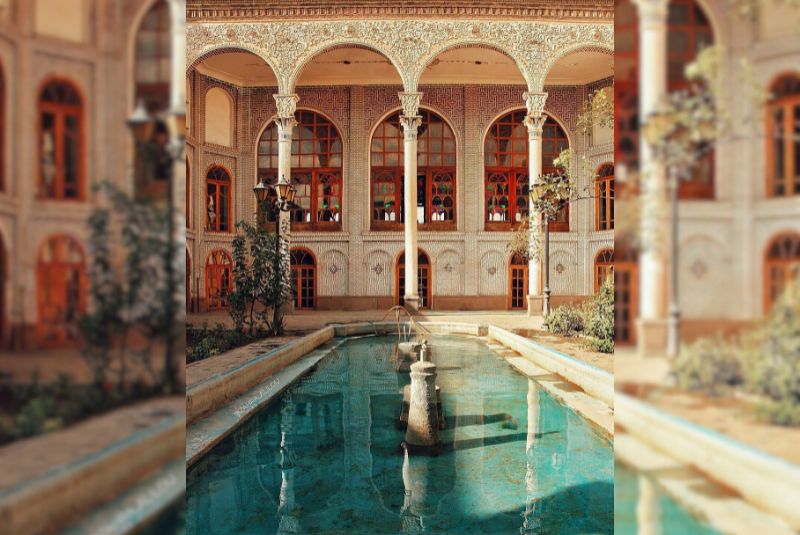
Entrance and Vestibule
The entrance to Behnam House is located at the back of the building, accessed via a narrow alley from Koocheh-e Moshir. Upon entering, visitors pass through a vestibule, a traditional feature in many historical Iranian homes designed to prevent outsiders from viewing the interior directly. This vestibule serves as a transitional space leading into the main areas of the house.
Outer Courtyard
The outer courtyard, or Beyroo, is characterized by its spaciousness and functional design. This area includes the Tambi, a large hall with seven doors (known as Haft-Dari). The Tambi is surrounded by various rooms, each with unique architectural details. The outer courtyard is notable for its intricate brickwork and its aesthetic appeal, which is enhanced by the surrounding rooms that overlook this space.
Summer Residence
The smaller building, or summer residence, was designed to be used as a Mahtebi—a type of open veranda without a roof, used for enjoying the moonlight. This structure is located in the northern part of the house and includes several rooms. The design of the summer residence features well-arranged brick patterns and angled side rooms that open onto the courtyard.
Inner Courtyard
The inner courtyard, or Andaruni, is a private area of the house with multiple rooms, a kitchen, and a basement. The basement was used as a summer lounge, while the inner quarters were reserved for the female members of the household, children, and servants. The inner courtyard's layout is thoughtfully designed with various rooms, and the brickwork and plaster details are aesthetically pleasing.
Southern Veranda
The southern veranda of the main building is richly adorned with ornate stucco work, including decorative plaster and intricate brickwork. The high columns of the southern veranda add grandeur to the structure. The Tambi of the main building is visible from this veranda, showcasing its east-west orientation and adjacent rooms known as Goshwareh.
Northern Veranda
The northern veranda features elegant wooden columns covered in stucco, with detailed plasterwork at the top. This section of the house faces the southern angle, where the southern veranda and summer residence are located.
Pond House
Beneath the Tambi is a Hozkhaneh (pond house), designed with artistic elements. Its domed ceiling and surrounding brickwork create a unique and visually appealing space. Additional ponds are found in the courtyard, but the architectural elegance of the pond house adds to the overall charm of the residence.
Restoration and Additional Structures
Parts of the western section of the house, including the stable, kitchen, and restroom, have been demolished. Restoration efforts, led by Tabriz University of Art, uncovered frescoes that have been carefully preserved. The restoration has enhanced the building's historical and architectural significance.
Amenities and Surroundings
While the Behnam House itself does not offer specific visitor amenities, the surrounding area includes various shops, cafes, and restaurants. Visitors can explore local crafts and enjoy the vibrant atmosphere of the neighborhood.
Best Time to Visit Behnam House
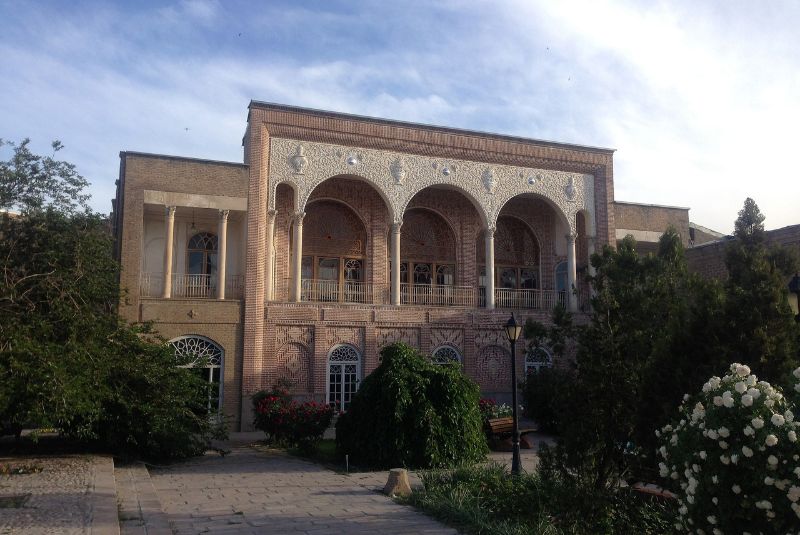
The ideal time to visit Behnam House is during the summer months. Tabriz, being a mountainous city, offers a pleasant escape from the intense heat experienced in southern regions such as Kish and Qeshm. The moderate summer climate makes it a favorable time for exploring the city's historical sites.
Opening Hours
Behnam House is typically open to visitors throughout the week from 09:00 AM to 06:00 PM.
Ticket Price
The entry fee to Behnam House is modest, making it an affordable destination for a historical and cultural experience. For Iranian citizens it is 10,000 IRR and for foreign visitors it is approximately 500,000 IRR.
Recommended Visit Duration: It is advisable to allocate about 2 hours to fully explore Behnam House. The small ticket fee is modest compared to the value of experiencing this historical site.
Behnam House Location
Behnam House is a notable historical site in East Azerbaijan Province, situated in Tabriz, specifically in the Saat Square area of the Maqsoudieh neighborhood.
How to Get There
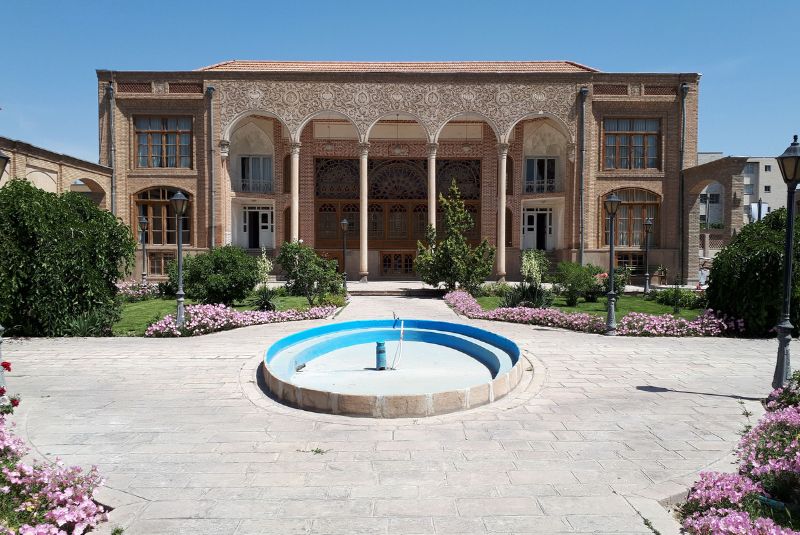
Public Transportation
You can reach Behnam House easily using public transportation. Take the metro to Saat Station, then continue on foot or by taxi to the house. This method is convenient and allows you to avoid the hassle of city traffic.
By Private Vehicle
If driving, head to Saat Square in the center of Tabriz. Parking may be challenging due to its central location. From Saat Square, turn onto Imam Khomeini Street, then onto Maqsoudieh Street. Proceed to Ark Jadid Street, where Behnam House is located.
Tourist Attractions Near Behnam House in Tabriz
Behnam House is ideally located near several noteworthy attractions in Tabriz. Here are some must-visit sites that you can explore around Behnam House:
Arg-e Tabriz (Tabriz Citadel)
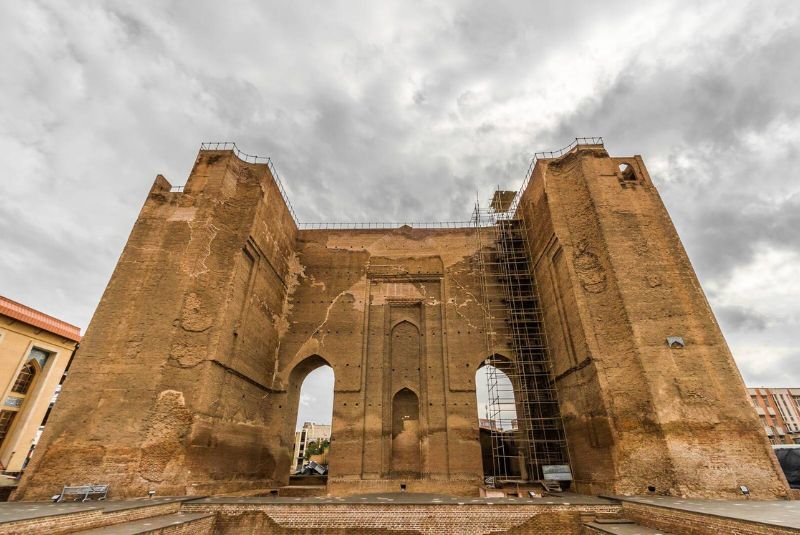
The Tabriz Citadel, an imposing and historic structure dating back to the Ilkhanate period, stands as a testament to the city's resilience through wars and earthquakes. Initially intended as a mosque, it was later converted into a military fortress. Today, it remains a significant historical monument, reflecting the architectural and cultural heritage of the region.
Tarbiat Pedestrian Walk
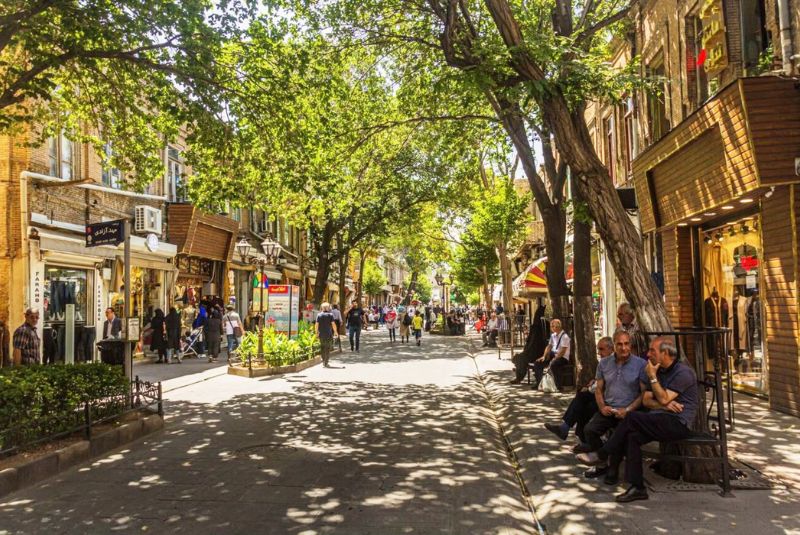
A part of the ancient Silk Road, the Tarbiat Pedestrian Walk is a vibrant and charming area. Paved with cobblestones and lined with various shops, it is an excellent place for strolling and shopping. The pedestrian walk features seating areas and statues depicting historical figures, making it enjoyable whether you are shopping or simply exploring.
Saat Square
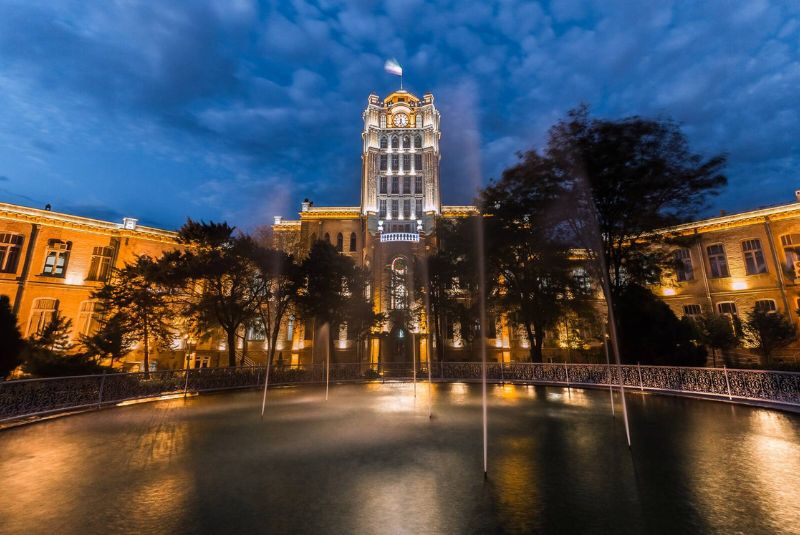
At the corner of Saat Square stands the Municipal Building, which is designed to resemble an eagle with outstretched wings. The large clock mounted on top of the building gives the square its name. This area also houses the Tabriz Municipal Museum, adding to the square’s cultural significance.
Shamsi House

Adjacent to Behnam House is the Shamsi House, once the residence of the renowned poet Shahryar. This house has been transformed into a museum showcasing Shahryar’s works and personal artifacts. Many of the exhibits have been donated by the local community, offering a unique glimpse into the life and legacy of this celebrated poet.
Nikdel House
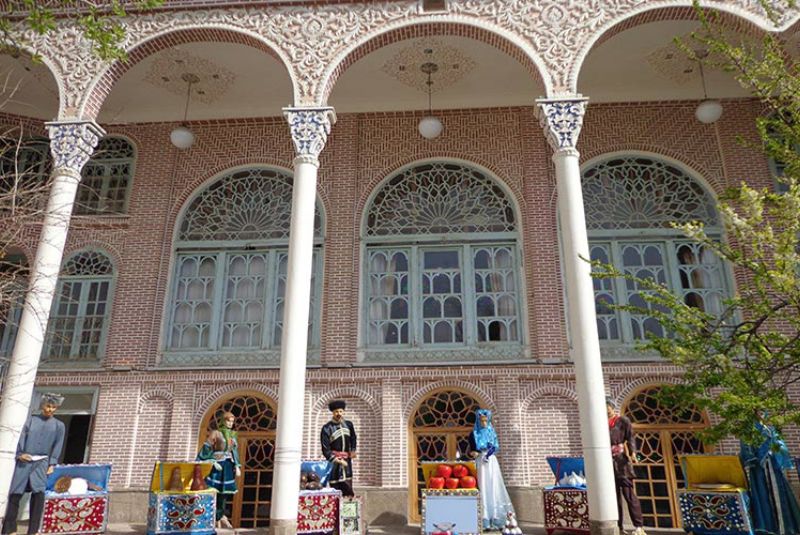
Another historical gem in Tabriz is Nikdel House, known for its exquisite mirror work and paintings. This house belonged to Ebrahim Nikdel, a prominent merchant of his time who specialized in household goods. Visitors can see various items he imported, including sewing machines and cameras, providing insights into the domestic life of the era.
Hotels and Restaurants Near Behnam House in Tabriz
If you're visiting Behnam House in Tabriz and looking for accommodation and dining options, here are some convenient choices nearby:
Hotels Nearby
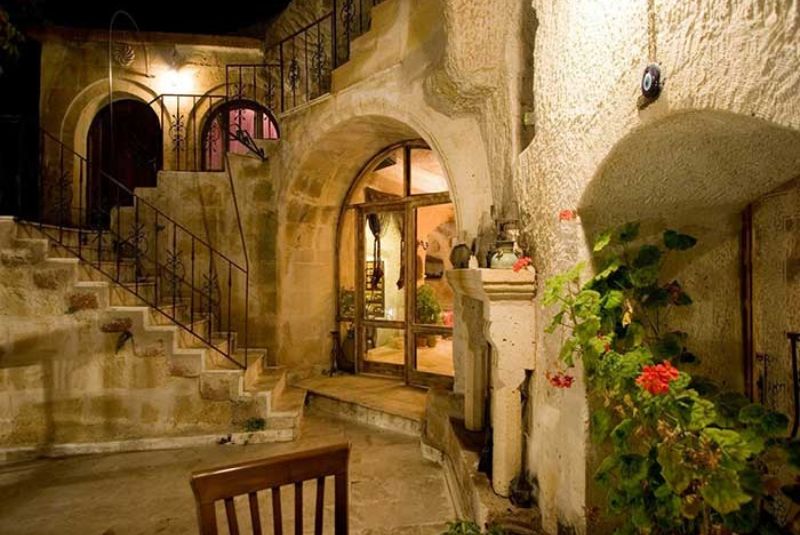
- Azerbaijan Hotel Tabriz
- Ahrab Hotel Tabriz
- Nobar Apartment Hotel Tabriz
- Sahand Hotel Tabriz
- Sina Hotel Tabriz
Restaurants Nearby

- Dizi Sara Nasir
- Ali Shah Restaurant
- Mazar-e Mohammadi Restaurant
- Afaq Restaurant
Bottom Line
Behnam House in Tabriz is a prime example of traditional Iranian architecture. Located in the Maqsoudiyeh neighborhood, Behnam house in Tabriz interior features intricate frescoes.
The house has a distinctive layout with separate winter and summer buildings. The house includes expansive inner and outer courtyards, each adorned with decorative elements that reflect its rich artistic heritage.
Originally constructed during the Zand dynasty and extensively renovated under Naser al-Din Shah Qajar, Behnam House now serves as part of the Tabriz Art University’s architecture department.
Share your story!
Comment below and let us know about your Experience.
Your story inspires others!


Comment
Leave a Comment